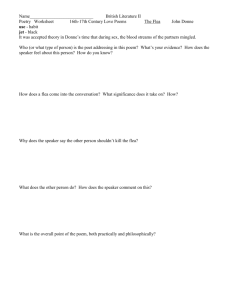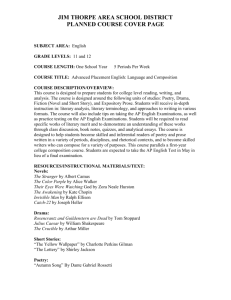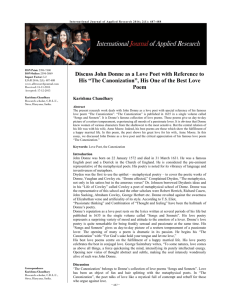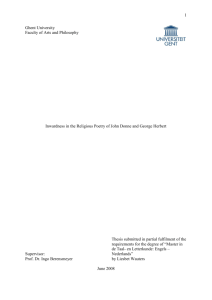GUIDANCE ON INTRODUCTION TO PART 2 ORAL – POETRY AND
advertisement
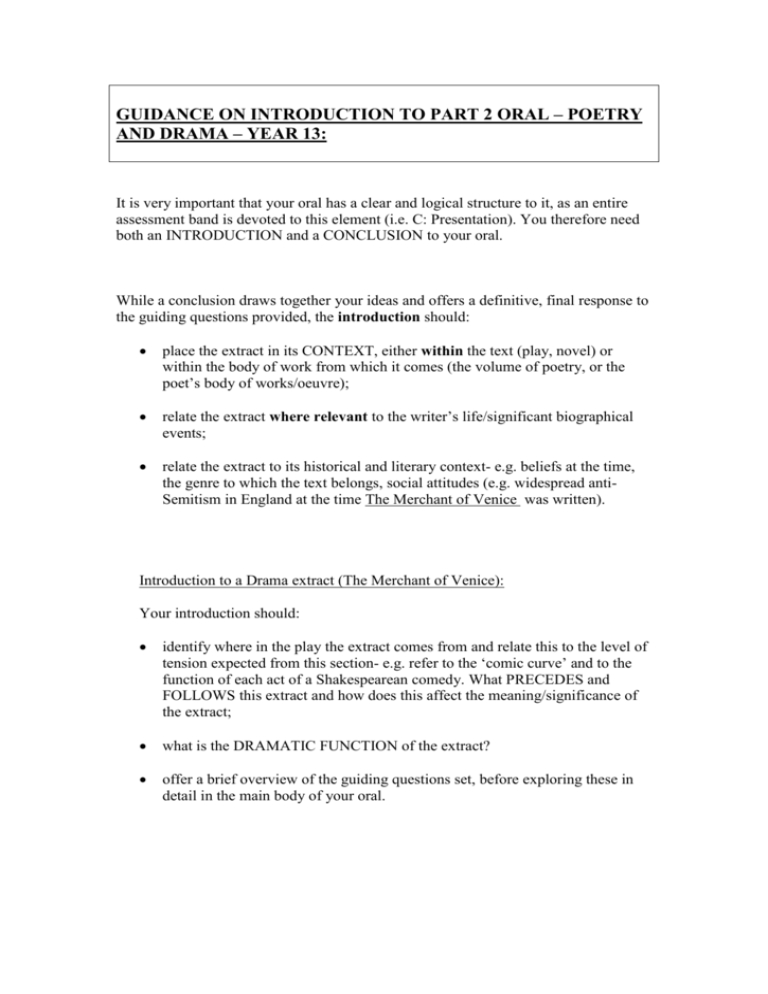
GUIDANCE ON INTRODUCTION TO PART 2 ORAL – POETRY AND DRAMA – YEAR 13: It is very important that your oral has a clear and logical structure to it, as an entire assessment band is devoted to this element (i.e. C: Presentation). You therefore need both an INTRODUCTION and a CONCLUSION to your oral. While a conclusion draws together your ideas and offers a definitive, final response to the guiding questions provided, the introduction should: place the extract in its CONTEXT, either within the text (play, novel) or within the body of work from which it comes (the volume of poetry, or the poet’s body of works/oeuvre); relate the extract where relevant to the writer’s life/significant biographical events; relate the extract to its historical and literary context- e.g. beliefs at the time, the genre to which the text belongs, social attitudes (e.g. widespread antiSemitism in England at the time The Merchant of Venice was written). Introduction to a Drama extract (The Merchant of Venice): Your introduction should: identify where in the play the extract comes from and relate this to the level of tension expected from this section- e.g. refer to the ‘comic curve’ and to the function of each act of a Shakespearean comedy. What PRECEDES and FOLLOWS this extract and how does this affect the meaning/significance of the extract; what is the DRAMATIC FUNCTION of the extract? offer a brief overview of the guiding questions set, before exploring these in detail in the main body of your oral. Introduction to a poetry extract (Donne or Heaney): HEANEY: state that the poem comes from Heaney’s first volume of poetry ‘Death of a Naturalist’ (published 1966) and outline the dominant themes of this volume (role of nature as a teacher, childhood disappointment, the poet’s craft, Heaney’s rural Irish upbringing, death, speech versus silence etc).; identify where in the volume your particular poem comes from and the significance of this (I NEED TO GIVE YOU A RUNNING ORDER OF THE POEMS IN THE VOLUME – REMIND ME!!!); relate the poem to: other poems in the volume in terms of similar themes, images, structure or devices AND to any relevant biographical details in Heaney’s life- e.g. ‘Mid-Term Break.’ Offer an overview of the guiding question(s). DONNE: It is much more difficult to make general statements about Donne and his poetry as it is not known for certain when exactly his poems wee published and the order they were intended to follow. identify that the poem comes from ‘Songs and Sonnets,’ the rather eclectic collection of Donne’s secular (or profane- i.e. non-religious poetry), rather than his religious poems and that this division in his poetry reflects the two elements in his life- the intellectual and wit (from 1592 he trained as a lawyer at Lincoln’s Inn, one of the Inns of Court of London, the influence of which may be seen in the involved arguments which characterise many of his poems) and the clergyman who became a priest in the Church of England; relate the poem to the preoccupying themes of Donne’s poetry, especially in his ‘Songs and Sonnets’ –i.e. love in its different forms (physical versus spiritual), faithfulness (fidelity)- John Carey suggests that this occupied Donne since he felt guilty about changing his religion and renouncing Catholicism in favour of the Church of England, egotism etc; relate the poem to the features of METAPHYSICAL POETRY- i.e. use of conceits (extended metaphor), involved arguments and the use of abstract concepts, paradoxes, exaggeration (hyperbole), arresting openings to poems and analogies taken from other branches of learning, as well as an often cynical attitude to the world. Offer an overview of the poem and your response to the guiding questions. E.G. OF INTRO TO ORAL ON DONNE POEM: ‘The Sun Rising:’ This poem, ‘The Sun Rising,’ comes from Donne’s ‘Songs and Sonnets,’ the collection of his secular poems. These poems are concerned with physical or worldly love, but often describe it using the language of religion. ‘The Sun Rising’ is a prime example of Donne as a metaphysical poet, also, since it is characterised by an arresting opening which recalls that of ‘The Canonization’ in its outburst of anger against something which intrudes on the private, intimate world of the lovers, the use of intricate arguments, conceits or extended metaphors and paradoxes. The poem also demonstrates the egotism of the speaker which is to be found in many of the ‘Songs and Sonnets’, but which here conveys the lover’s sensation of being at the centre of the universe. This poem, with its playful, witty arguments, shows the influence of Donne’s early training as a lawyer at Lincoln’s Inn from 1592 and his interest in several branches of learning (e.g. astronomy). The religious language also illustrates Donne’s genuine spirituality, even if he often approached blasphemy in the ‘Songs and Sonnets’ by equating divine and worldly love. Despite the playful, even bawdy tone of many of his poems, Donne, after all, became a priest in the Church of England. The ‘Sun Rising’ is essentially a challenge from the lover to the sun, which, in rousing him from bed, is interrupting his pleasure with his lover. The speaker of the poem asserts the primacy of his love over the sun and concludes by arguing that he and his lover are “the world” and that their bed is the sun’s centre.

